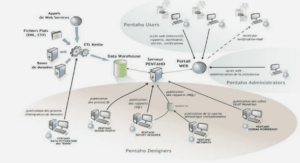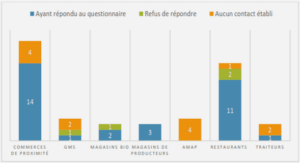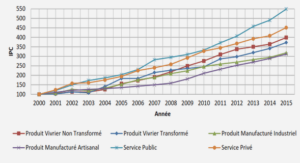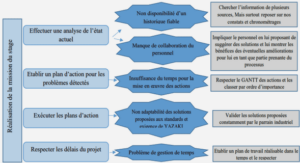Specific research objectives
Although POSS are nanoscaled molecules by nature, a vast majority of them exist in the form of crystalline solids at the micron scale. Consequently, besides proper selections of POSS, fabrication methods play a vital role in achieving POSS/PE nanodielectrics with enhanced performances. In this project, three fabrication methods are attempted. 3 The first method considered is ball milling (Suryanarayana, 2001; Zhang, 2004). Ball milling is widely used in mechanical alloying and milling. Moreover, it can be used to fabricate nanopowders and nanocomposite powders. In this work, with the goal of breaking micro-sized POSS crystals into nano sizes, high-energy ball milling, which involves high-energy impact and friction forces, is tested as a method for producing POSS/PE nanodielectrics. The results of this part are published in one journal article and several conference papers, as shown in Chapter 3 and APPENDIX I. The second method involves xylene solution blending (Lau et al., 2013; Shaffer et Windle, 1999). It has potential for producing POSS/PE nanodielectrics, as both POSS and PE dissolve and are thus mixed at the molecular level in xylene solution.
However, removal of xylene, by means of precipitation and evaporation, may lead to phase separation and changes in phase morphology. Moreover, residual xylene can affect composites’ properties and disturb measurement results. In addition, xylene is comparatively expensive and environmentally unfriendly (George et Thomas, 2011). The findings of this part lead to the publication of one journal article and several conference papers, as shown in Chapter 4 and APPENDIX I. The third method concerns melt blending (Loukus, Halonen et Gupta, 2004; Utracki, 2008). The key to obtaining homogeneous nanocomposites lies in the optimization of dispersive mixing and distributive mixing—the former involves reducing fillers to nanometric sizes and the latter involves spreading nano-fillers uniformly throughout the matrix (Bellucci et al., 2010). In this project, a twin-screw extruder is used. Low barrel zone temperatures are employed to increase shear and elongational stresses, and thus favor an effective dispersive mixing. Moreover, low temperatures also help prevent POSS evaporation and material degradation. The results found for this part are reported in one journal article and several conference papers, as shown in Chapter 5 and APPENDIX I.
A brief historical review
The first flexible insulating-fluid-impregnated paper-insulated cables were introduced in 1885. In the following years, there continued to be improvements in paper selections, insulating fluid selections, and general designs to control voids and increase dielectric strengths. Until the early-1980s, impregnated-paper-insulated lead-covered cables were the predominant power cables of underground transmission and distribution systems. The use of synthetic polymers (e.g., elastomers, thermoplastics) as cable insulation was prompted by the industrial applications of these materials during and after World War II. Unlike impregnated-paper-insulated cables, synthetic-polymer-insulated cables can be extruded. Butyl rubber was the material of interest for a period of time. Newer synthetic elastomers such as Neoprene (1931), chloroprene, and Hypalon (1951) were developed with improvements in processing and properties (e.g. enhanced resistances to flame and dielectric aging). Ethylenepropylene rubbers (EPR) were introduced in the 1960s. However, their uses in utility systems did not start to increase until the 1970s to 1980s, when easier extrusion was made possible to reduce costs. Nowadays, EPR can be found in a large range of applications at various voltage levels. However, they are less popular than cross-linked polyethylene (XLPE) and treeretardant XLPE (TR-XLPE) due to their relatively higher costs and dielectric losses.
Low-density high-molecular-weight polyethylene (LDHMWPE) was widely employed in underground power cables in the mid-1960s, thanks to its ease of processing (i.e. it can be readily extruded), low cost and good electrical properties. XLPE was commercially available since 1963. It has higher temperature withstands under normal and overload operations as compared to LDHMWPE, thanks to its thermoset network formed by PE molecules chemically joined together. However, in the early-1970s, premature failures of LDHMWPE-insulated and XLPE-insulated power cables as a result of water trees (medium-voltage cable applications) and contaminants (high-voltage cable applications) were frequently reported. To resolve these problems, several measures were introduced, such as the employment of a cable jacket to reduce moisture ingression and water penetration, the replacement of the steam-curing process with a dry-curing process, the adoption of TR-XLPE that hinders the growth of water trees, the application of smooth semi-conductive shields to dissipate ionic species, and the development of extra-clean insulating materials through extra-clean manufacturing processes, packaging and storage. Nowadays, LDHMWPE is commonly found in low voltage cables (less than 600 V), whereas XLPE and TR-XLPE are particularly popular for medium and high voltage power cables (Bernstein, 2011; Bernstein et Thue, 2011; Orton, 2013; Umeda et al., 2007; Underground Electric Transmission Lines, 2011).
Dielectric properties
One basic parameter of an insulating material is its electrical resistivity. It represents the material’s resistance to the passage of electric currents. Thanks to strong covalent bonds, polymeric dielectrics have virtually no free charges capable of leading to continuing conduction currents under normal conditions. Consequently, they have high electrical resistivities of generally 1016 ⋅m and above. The reciprocal of electrical resistivity, i.e., the electrical conductivity, is thus generally 10-16 S/m and lower. The parameter of great interest in electrical engineering applications is the frequencytemperature- dependent relative complex dielectric permittivity r∗. Its real and imaginary parts are commonly referred to as dielectric constant and dielectric loss, respectively. Relative values are used for the sake of practical convenience; they are obtained by having absolute complex dielectric permittivities divided by the vacuum dielectric permittivity 0 ( 0 = 8.8510-12 F/m). Materials with high dielectric constants have high capacities to store electric charges, and are thus widely used in capacitors to store electrical energy. In applications related to electrical insulation, however, materials with low dielectric constants are desired (ASTM Standard D150, 2011). Dielectric loss causes energy loss and decreases power-transmission efficiency, and is thus preferred to be as low as possible. More information on r∗can be found in Chapter 2.
Another important aspect of electrical insulation is the dielectric breakdown strength. It represents the maximum electric field a dielectric can withstand without breaking down and thus failing to perform its insulating function. Dielectrics with high breakdown strengths contribute to not only increase the reliability of power-transmission systems, but also reduce the insulation thickness for cost reductions and better heat dissipation. In service conditions, electrical degradation or aging, caused by electric fields orders of magnitude below the breakdown strength, has been found to be particularly detrimental for polymeric insulation materials. Consequently, dielectric endurance against such as partial discharges, electrical trees, and water trees, is a parameter of great significance in describing insulating materials. Partial discharges arise from the breakdown of micro-voids defects. They cause material erosion and lead to micro-cracks and even electrical trees. Electrical trees are branched tree-like gas-filled connected channels. In addition to discharging voids, they can be initiated by conducting protrusions or contaminants due to local electric field intensifications. A short-circuit, and thus a breakdown, occurs when electrical trees completely traverse the insulation. Water trees are branched tree-like water-filled rarely-connected micro-cavities. They grow in moist conditions, from contaminants, boundary surfaces, and water-filled voids. Although they can traverse the insulation without causing failure, they can initiate electrical trees which eventually lead to dielectric breakdown. Another criterion for evaluating insulating materials concerns space charge dissipation, i.e., the ability of insulation materials to dissipate space charges. Space charge accumulation can significantly distort the local electric field and accelerate the degradation process. It is also one of the major factors restricting the development of XLPE-insulated HVDC power cables.
|
Table des matières
INTRODUCTION
CHAPTER 1 ELECTRICAL INSULATION FOR UNDERGROUND POWER CABLES
1.1 A brief historical review
1.2 Physical properties
1.2.1 Dielectric properties
1.2.2 Thermal properties
1.2.3 Other properties
1.3 Nanodielectrics
1.4 Materials review
1.4.1 Polyethylene (PE)
1.4.2 Polyhedral oligomeric silsesquioxanes (POSS or POS)
CHAPTER 2 DIELECTRIC POLARIZATION AND DIELECTRIC RELAXATION
2.1 Electrostatics of dielectrics
2.2 Polarization mechanisms in dielectrics
2.2.1 Electronic polarization
2.2.2 Atomic polarization
2.2.3 Dipolar polarization
2.2.4 Interfacial polarization
2.3 Dielectric relaxation
2.3.1 Dielectric relaxation in time domain
2.3.2 Dielectric relaxation in frequency domain
2.3.3 Dielectric relaxation in polymers
2.3.4 Equations to describe dielectric relaxation
2.3.5 Dielectric relaxation in heterogeneous dielectrics
CHAPTER 3 POLYETHYLENE/POLYHEDRAL OLIGOMERIC SILSESQUIOXANES COMPOSITES OBTAINED BY BALL MILLING
3.1 Introduction
3.2 Experimental
3.2.1 Materials
3.2.2 Sample preparation
3.2.3 Characterization techniques
3.3 Results and discussion
3.3.1 Thermogravimetric analysis (TGA)
3.3.2 Scanning electron microscopy (SEM)
3.3.3 Broadband dielectric spectroscopy (BDS)
3.3.4 Progressive-stress breakdown tests (PSB)
3.4 Conclusion
3.5 Acknowledgements
CHAPTER 4 POLYETHYLENE/POLYHEDRAL OLIGOMERIC SILSESQUIOXANES COMPOSITES OBTAINED BY XYLENE SOLUTION BLENDING
4.1 Introduction
4.2 Experimental
4.2.1 Materials
4.2.2 Sample preparation
4.2.3 Characterization techniques
4.3 Results and discussion
4.3.1 Fourier transform infrared spectroscopy (FTIR)
4.3.2 Scanning electron microscopy (SEM)
4.3.3 Thermogravimetric analysis (TGA)
4.3.4 Differential scanning calorimetry (DSC)
4.3.5 Thermal conductivity
4.3.6 Broadband dielectric spectroscopy (BDS)
4.3.7 Progressive-stress breakdown tests (PSB)
4.3.8 Surface partial discharge tests
4.4 Conclusion
4.5 Acknowledgements
CHAPTER 5 POLYETHYLENE/POLYHEDRAL OLIGOMERIC SILSESQUIOXANES COMPOSITES OBTAINED BY EXTRUSION
5.1 Introduction
5.2 Experimental
5.2.1 Materials
5.2.2 Sample preparation
5.2.3 Characterization techniques
5.3 Results and discussion
5.3.1 Scanning electron microscopy (SEM)
5.3.2 Differential scanning calorimetry (DSC)
5.3.3 Thermal conductivity
5.3.4 Rheological measurements
5.3.5 Broadband dielectric spectroscopy (BDS)
5.3.6 Progressive-stress breakdown tests (PSB)
5.3.7 Surface partial discharge tests
5.4 Conclusion
5.5 Acknowledgements
CHAPTER 6 DIELECTRIC RESPONSES OF LDPE/POSS COMPOSITES AT ELEVATED TEMPERATURES
6.1 Dielectric responses of LDPE/POSS composites
6.2 Charge transports in LDPE/IO5
6.3 Activation energies of charge transports
6.4 Fitting the dielectric loss of LDPE/IO5 with MWS equation
CONCLUSION
RECOMMENDATIONS
APPENDIX I PERSONAL PUBLICATION LIST
LIST OF BIBLIOGRAPHICAL REFERENCES
![]() Télécharger le rapport complet
Télécharger le rapport complet




